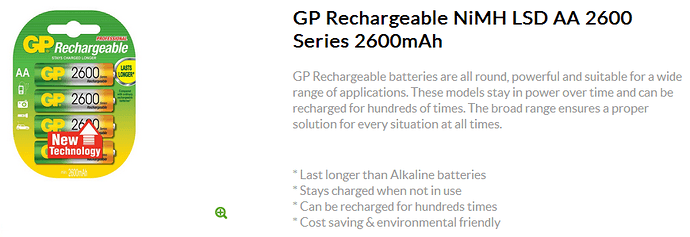I’ve been using the same 2300 mAH Energizer “recharge” AA NiMH cells in my old Garmin Etrex Vista C GPS for many years now. Three pairs of these cells have seen almost 1000 SOTA activations now, plus countless other cycles in headlamps, etc. The Garmin will run longer on 2 of these cells than I can - more than 16 hours, even in the cold. I almost never buy AA batteries for it.
Long ago I learned that many of the inexpensive chargers sold for these cells gradually ruin them. They do a pretty fast charge, but they either don’t stop charging at a high rate soon enough, or they continue with too much current after the charge is done. If the cells get warm in the charger, they probably won’t last as long as mine have.
Despite reading various articles about how to charge NiMH cells correctly, I decided to try using a voltage regulated, current-limited charger. This is a real No-No according to some experts! The secret is not to be in a hurry.
My homebrew charger started as one of the cell-killing chargers I had used previously. Two cells are connected in series and fed from an adjustable linear voltage regulator (LM317T):
- The LM317T voltage regulator is set for 3.15V.
- A high-quality pot is used for the voltage adjustment.
- A current regulator, also based on the LM317T, precedes the voltage regulator.
- Current is limited to 300 mA, and a pot control is provided to reduce this to about 250 mA (normally).
- A meter and a bulb indicator show the charging current.
- The two series-cells being charged also have a 1N5817 Schottky diode in series.
- A second pair of cells, also connected with a series 1N5817, can be charged simultaneously. Since the total current is limited, 4 cells need longer 2 cells.
- The Schottky diodes prevent interactions between the pairs of cells, and they guard against reverse polarity errors.
Each Schottky diode reduces the 3.15V charging voltage from the regulator to about 2.80-2.85V at the cells. The voltage drop of the Schottky is about 0.3V during most of the charge. However, at very low currents, the voltage drop is less, allowing the charger and the cells to negotiate the voltage near the end of the charge. This allows some reasonable low float current to continue after the charge is essentially complete.
My NiMH cells need to be charged at about 1.42V per cell, when using a simple voltage regulator. This voltage has an inverse relationship to temperature! At 20-25 degrees C, 1.42V per cell is about where you need to be to charge these cells with a regulated voltage and low, limited current. At higher cell temperatures, the end-of-charge float current of a voltage-regulated charger will increase, and this could be a problem if charging these cells in a less-controlled environment than inside my house. However, my charger still works OK, without air conditioning, in the upstairs of our house in summer!
In summer, with the inside temperature at about 30 C, the end-of-charge current rises to as much as 30-40 mA; in winter, with the inside temperature about 20 C, I see the end current about 15 mA.
Note that if you charge at a higher rate, say 1A, the cell temperatures will rise considerably during charge, likely causing the current not to drop sufficiently as the end of charge is approached.
By limiting the charging current to 250 mA, heating of the cells is minimized. This makes the charging procede in a very orderly and predictable way. It also takes longer to charge the cells than most of the commercial chargers.
The charging current starts out at about 250 mA and is limited by the current regulator. Most of the charge is delivered in a few hours, depending on the state of discharge of the cells.
The current decreases gradually as charge progresses, and the cell voltage moves up toward the voltage-regulated input. After the current drops to about 25 mA, I usually remove the cells from the charger. If I forget and leave them on overnight, no harm is done.
An older charger I had delivered about 60 mA to the cells after the end of charge, and this gradually increased the internal resistance of my cells, until they would no longer work effectively outdoors in winter. This might have been due to gradual loss of water from the electrolyte.
One of the best features of my charger is that I can top off my cells anytime, regardless of their state of charge. Ordinary NiMH cells lose energy and voltage on the shelf, but they can be brought up near full power after a relatively short time in the regulated charger. There is no danger of charging too much.
Whatever charger you use, check the post-charge current to make sure it isn’t too high. Also feel the cells to see if they’re getting warm. In my slow charger the cells don’t get warm enough to feel it.
At local stores I see new types of NiMH cells for sale - some of these say they will retain charge for many months. Newer chemistry makes this possible. I have not tried these yet. In any case, they will work best if used with the correct type of charger for their chemistry.
Long charge retention is not very important to me, so I can’t speak to that. My cells still have plenty of charge a few weeks after charging, and they are many years old.
Maximum charge energy and fast charges aren’t what I really need. Long life and reliability are what I’m getting, and I suspect that most people who use NiMH AA’s aren’t getting these kinds of results from the products that they use to charge their cells. They sure buy a lot of one-way AA’s!
Your results may vary…
73
KX0R
George
